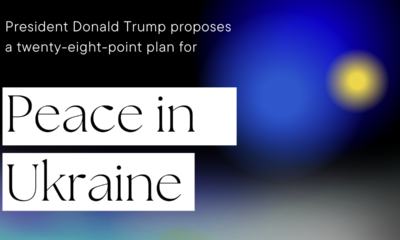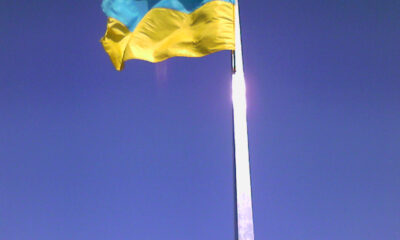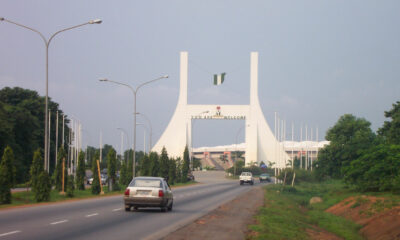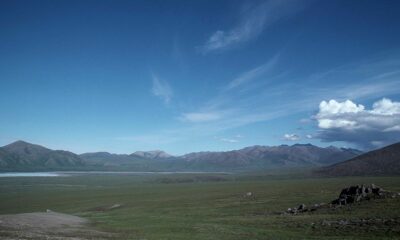Civilization
U.S. Defense of Taiwan Confronts a Powerful Chinese Nuclear Deterrent
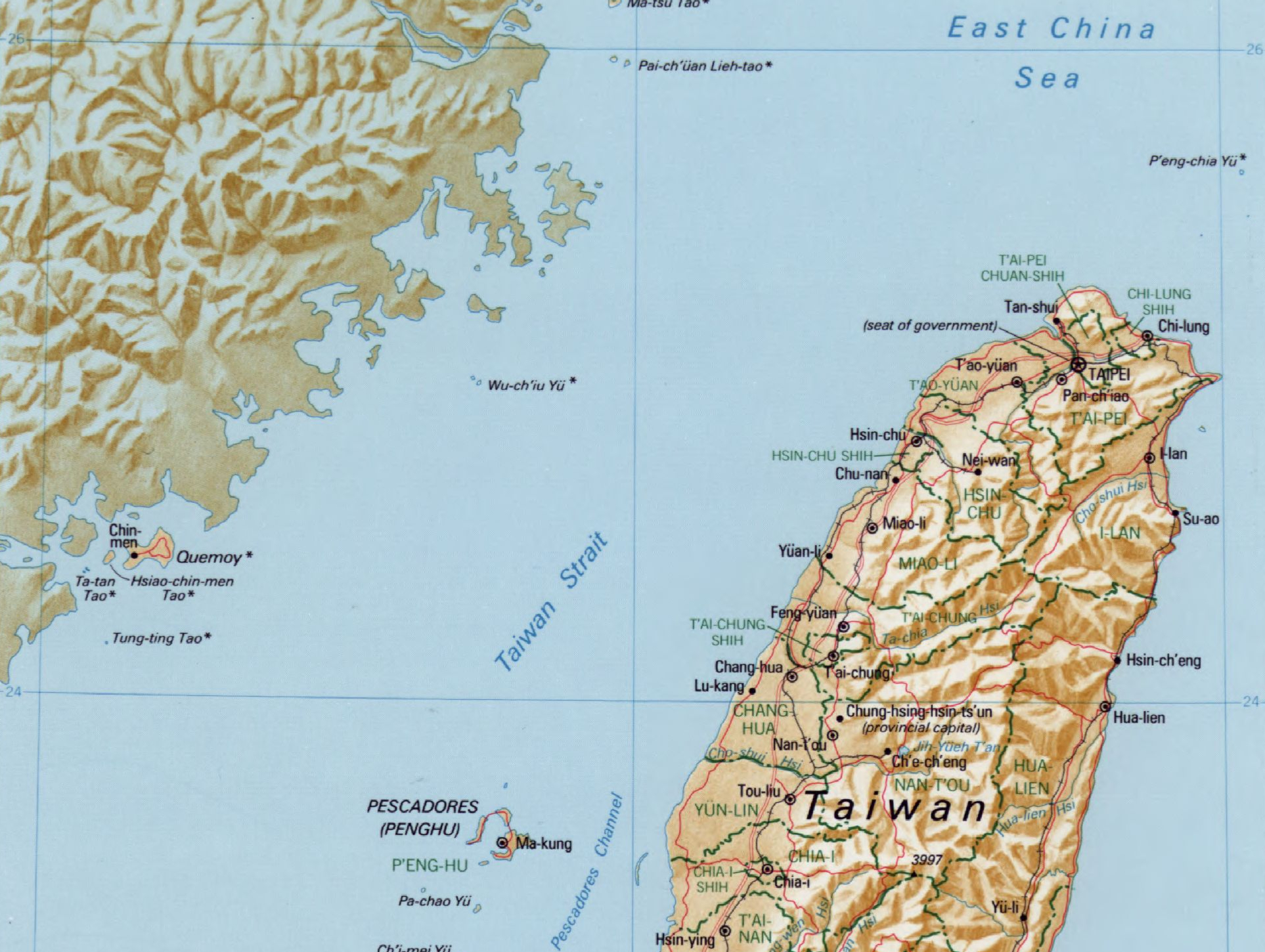
In a War to Defend Taiwan, the U.S. Will Confront a Powerful Chinese Nuclear Deterrent
In any Taiwan contingency, the U.S. will be confronting a totalitarian China with an unprecedentedly strong nuclear arsenal, and with a major incentive to make limited use of its inventory to assert its regional sphere of influence. Although China’s scandal-plagued strategic nuclear arsenal is far less robust than that of the Soviet Union, American cities are well within reach of a first strike.
According to the 2024 IISS, since 2017, China has deployed 36 road-mobile solid-fueled 13,000 km range DF-41 100 meter CEP ICBMs with 10 MiRV-ed warheads and 13,000 km range, which translated, and assuming two warheads per target, China can destroy 180 of the U.S.’s largest cities within 45 minutes of a transpolar launch. Estimates are that this arsenal will increase to 100 DF-41 (and 1,000 warheads in 2030, to 1,500 by 2035), thus 500 U.S. cities. A dated but relevant NRDC study demonstrated the vulnerability of Russian mobile SS-25 nuclear launchers to U.S. counterforce. There are 30 older DF-31, six in silos and 24 road mobile. China possesses another 18 largely symbolic (liquid fueled and poorly unprotected) DF-5 missiles.
Force and counterforce
In the outbreak of war over Taiwan, it is expected that the U.S. will engage in conventional counter-force attacks, as it had planned to do so against the USSR, before the nuclear threshold is crossed by Beijing. China may be tempted to mimic a canceled 1969 Soviet program (FOBS: Fractional Orbital Bombardment System), which would deploy slow and therefore cold and difficult to detect orbital nuclear warheads, that would be lobbed from Antarctic and across the Mexican border at US targets. China’s principal deployment effort are two new fields of ICBM silos, which according to Kenneth Waltz (More May be Better – 1981), who has influentially argued that nuclear arsenals engender peace, is a stabilizing development. Scott Sagan, who has made a career of cataloguing human and organizational errors and stupidity in the security field, is far less optimistic.
The Chinese have “boomers”
China also operates six Jin class SSBNs, with at least one on patrol in the South China Sea since 2023. They mostly carry the JL-2 missile, with which to hit the U.S., they would need to survive U.S. anti-submarine systems in the Western Pacific. Some are now equipped with the new JL-3 missile, which can strike the U.S. from the Chinese coast. To avoid being hunted by the U.S., Beijing may negotiate with Moscow to deploy the Jin SSBNs in the Russian Far East bastion of the Sea of Okhotsk. China possesses another 250 nuclear-capable ballistic missiles, cruise and hypersonic vehicles, and a few dozen legacy and project bombers, with regional reach.
Whether counting total submarines (China: 59, Soviet Union peak 300+), or warheads (China: 410 in 2023, out of a peak of 1,000-2,000, Soviet Union: 55,000), or nuclear tests (U.S.: 1,054, USSR: 715, China: 45, the last in 1996), China is not yet at a nuclear breakout stage. In contrast, the Soviet Union’s trans-continental nuclear missile force surged from zero in 1961 to 1,300 in 1970, and then grew to 1,398 by 1980. There is a debate whether China’s low warhead count was the result of a calculated doctrine of minimum deterrence, as articulated by Jeffrey Lewis, or whether it simply fit with persistent shortcomings with China’s breeder reactor program at the Jiuquan Complex in Xinjiang, that limited plutonium production.
Mass production
China is well aware that once the dedicated infrastructure is in place, thermonuclear nuclear weapons are inexpensive (even if we include the historical thirty percent environmental clean-up surcharge), and easily mass produced. Based on the 70,299 nuclear warheads manufactured by the US between 1945 and 1994, nuclear warhead manufacture cost only 7% of the U.S. nuclear forces budget (average warhead cost of $4.8 million in 1998 USD, or the cost of a pair of tanks), and 14% for delivery systems (missiles, bombers, and submarines). Over half of the U.S. strategic budget was for salaries and overhead. Between 1959 and 1961, the U.S. manufactured a single nuclear warhead every 50 minutes.
It was concern over this ease of manufacture that led the U.S. and Soviet Union to cooperate in supporting the 1968 Non-Proliferation Treaty and to block the sharing of nuclear weapons technology. Neither one wanted Germany or Japan to possess an unsupervised nuclear arsenal, let alone Sweden, Argentina, Iraq or South Korea. China agreed to a similar de facto arrangement, in exchange for cooperating to keep Iran from crossing the threshold. China is aware that Japan possesses a rapidly expandable uranium enrichment and breeder reactor, and a vastly larger stockpile of separated plutonium stocks, enough for between several hundred to a thousand warheads. In 2015, Japan initiated a solid-fuel missile program on the island of Tanegashima, with U.S. help, the preferred launch system for a warhead, and an unnecessarily expensive rocket for civilian purposes.
Brinksmanship over Taiwan?
While some have argued for exceptionalism in Chinese nuclear strategy, it is far more likely that China recognizes that a large warhead stockpile enables reserves for crisis brinkmanship, post-exchange bargaining for war-termination, and provides for general deterrence (which is having an arsenal so large that it disincentivizes regional attempts to match China’s arsenal, in the same way an overwhelming U.S. arsenal dissuades Mexico and Brazil). China has been able to draw insights from nuclear debates for over a century now.
John Toland confirmed through his interviews that Adolf Hitler was aware of atomic weapons technology. He was likely informed of H.G. Wells’ vivid description of a nuclear war in his 1913 book, written before even the First World War (The World Set Free). The most influential academic nuclear strategist, naval historian Bernard Brodie (The Absolute Weapon – 1946) argued that given the impossibility of a practical defense, a hidden second-strike arsenal would make deterrence exceptionally robust.
No advantage in a quick strike
Thomas Schelling (Arms and Influence – 1966) made the point that there was no strategic advantage in fighting nuclear war quickly, as implied by a Lanchester modelling of nuclear war as a counterforce artillery exchange, since two sides needed time to negotiate to avoid mutual annihilation. The most influential nuclear strategist among those in the military responsible for counterforce planning is William Borden (There Will be No Time – 1946), who correctly predicted large arsenals and the logic of the pursuit of nuclear superiority, and argued that cities would be attacked last, not first, since they were large and highly unlikely to move. Napoleon only shelled Vienna to coerce the Austrians to submit, because they uncharacteristically refused to surrender after their defeat at the 1809 Battle of Wagram.
The problem is that China’s aggressive sabre-rattling may be a symptom of self-delusion that a small arsenal is sufficient to coerce its neighbors and deter U.S. intervention on the Asian littoral. It took the 1962 Cuban Missile Crisis to alert the Soviet leadership of the dangers of nuclear adventurism and the reality of the shared risk, especially with limited capabilities.
What does China have
China will not have a large stockpile of tactical nuclear weapons for at least a decade, and so any demonstrative use of nuclear weapons during a conflict over Taiwan will be drawn from its small regional arsenal of perhaps less than 200 warheads. If the U.S. defends Taiwan by attacking Chinese forces, either from bases in the Philippines or on Taiwan itself, Beijing is under the risk that a stability-instability paradox phenomenon (making war “safe” at the conventional level) will neutralize its arsenal of nuclear weapons, giving Beijing a large incentive to restore instability by conducting a single or small-scale nuclear attack.
China will in all likelihood confine its nuclear strikes to Taiwan and the surrounding waters and islands, perhaps including U.S. bases in the Philippines and Okinawa. The U.S. needs to prepare and rehearse commensurate responses, the most obvious target being concentrations of PLAN amphibious vessels, logistics depots on Taiwan, or the principal beachhead seized by Chinese marines.
Even if Taiwan goes, China can’t hold it forever
It is in the U.S. interest, because of the superior resources available to it and its allies after a blockade of China, that any conflict over Taiwan remain non-nuclear, even at the risk of temporarily losing Taiwan to China. Unlike the huge economic loss resulting from a Soviet conquest of West Germany and occupation of the Rhur Valley, which justified initiating a nuclear conflict on the Rhine or even at the East German border, Taiwan is not economically crucial. The loss of smaller democracies to totalitarian occupation or conquest, like Czechoslovakia in March of 1939, or Hong Kong in 1997, can eventually be reversed given a coherent containment strategy targeting China. The long-term advantage that democratic states have in forming overwhelming economic and military coalitions, as compared with the loosely-coordinated coterie of Russia-China-Iran, would be lost by the costs of a strategic countervalue nuclear war.
This article was originally published by RealClearDefense and made available via RealClearWire.
Dr. Julian Spencer-Churchill is associate professor of international relations at Concordia University, and author of Militarization and War (2007) and of Strategic Nuclear Sharing (2014). He has published extensively on Pakistan security issues and arms control, and completed research contracts at the Office of Treaty Verification at the Office of the Secretary of the Navy, and the then Ballistic Missile Defense Office (BMDO). He has also conducted fieldwork in Bangladesh, India, Indonesia, and Egypt, and is a consultant. He is a former Operations Officer, 3 Field Engineer Regiment, from the latter end of the Cold War to shortly after 9/11.
-

 Civilization3 days ago
Civilization3 days agoDC Pipe Bomb Arrest Raises Questions About Christopher’s Wray’s FBI
-

 Civilization4 days ago
Civilization4 days agoThe Legal Logic Behind U.S. Operations Against Narco-Terrorist Networks
-

 Executive5 days ago
Executive5 days agoNewsom’s ‘National Model’ for Homeless Wracked by Fraud
-

 Executive4 days ago
Executive4 days agoWhen You’re in a Hole, Stop Digging
-

 Education3 days ago
Education3 days agoWaste of the Day: Taxpayers Subsidize Football Coach Severance
-

 Executive2 days ago
Executive2 days agoWaste of the Day: Obamacare Failed Test, Approved Fraudulent Subsidies
-

 Civilization2 days ago
Civilization2 days agoPence Calls on Trump To Fire RFK Jr Over Abortion Drug
-

 Executive4 days ago
Executive4 days agoWaste of the Day: Feds Pay Nonprofits That Sue the Government







